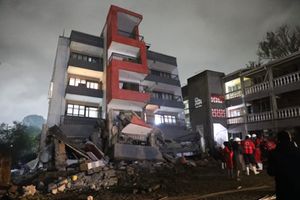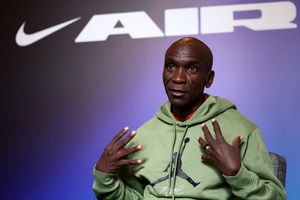Ramaphosa moves to allow private firms to produce electricity

South African President Cyril Ramaphosa has announced a major initiative to supplement the country’s tottering electricity supply grid, bypassing ideological and administrative blocks to allow private sector players to produce power independently and with shorter timelines.
Recognising the urgency of addressing ongoing power shortages, mainly caused by decades of non-maintenance, corruption and internal inefficiencies at Eskom, Africa’s largest power utility, Ramaphosa went around existing ‘logjams’ in an effort to draw in quick-build privately funded renewable energy projects.
With an installed capacity of about 51GW, Eskom provides about 95 percent of electricity from all sources in South Africa, representing about 45 percent of Africa’s total power production.
But with an ageing fleet averaging 47 years of service, Eskom is due in the next several years to permanently decommission nearly half of its current capacity.
Minerals and Energy Minister Gwede Mantashe, supported by unions in the coal mining and burning industries, have resisted efforts for South Africa to go ‘full-scale’ into renewable energy sources, using mainly solar and wind, with a small quantity of hydro, tidal and potentially geothermal sources.
Mantashe remains committed to an extension of the nuclear fleet, from its current singular plant at Koeberg, near Cape Town, to add six more, in line with the ‘handshake deal’ between former president Jacob Zuma and Russian Federation President Vladimir Putin in 2015, a deal subsequently ruled illegal by the courts.
No money
But there is no money nor time for a hugely expensive nuclear build programme.
It was Mantashe and like-minded people in the ruling African National Congress (ANC), who are in principle opposed to private sector players in the power production sector, who have put an effective five-year hold on solar power development in particular.
Conditions have worsened so severely in the meantime that Ramaphosa has stepped in and bypassed Mantashe and his other colleagues who want the state to be the only power producer. The president promised the stripping away of bureaucratic delays to allow anyone producing energy to feed it into the national grid.
The latest round of the government’s Renewable Energy Independent Power Producer Procurement Programme launched last year envisaged more wind and solar, mainly PV cell and concentrated solar power (CSP), with battery or other storage.
Arguments against solar and wind have been around the perceived incapacity of these renewable energy sources to maintain ‘baseload supply’ on the national grid.
But that argument, used by Mantashe and the relevant unions, with some commentators agreeing, appears to be not merely inaccurate, but it also does not pertain in a power emergency situation such as that in South Africa.
In a Monday evening televised address, Ramaphosa announced what he intended to do about Eskom’s inability to return to reliable supply, sufficient to meet the peak daily demand of around 33GW on cold winter evenings.
He said the government will allow new energy generation by the private sector without prior limits to ensure that more projects come online faster, urgently.
It has been acknowledged that even in their current limited applications, renewables helped South Africa avoid a total grid collapse during recent heavy rounds of outages caused by cascade failures in the ageing fleet of coal-fired stations.
South Africa needed a two-pronged strategy to deal with the current energy crisis, said Ramaphosa: find the capacity to meet the current shortfall to limit load-shedding, and urgently source new capacity to end load-shedding permanently.
The outages have been hammering the South African economy, costing the country about $235 million a day at the highest levels of ‘load-shedding’, such as recently experienced.
Having returned to ‘normal’ at the weekend, Monday began with a warning from Eskom that another five coal-fired plants had tripped overnight and load-shedding could return at any moment.
Aside from lost productivity and direct economic impacts, the unreliability of power in South Africa is a known factor in foreign direct investment hesitancy.
Economic damage
Ramaphosa said that load-shedding at the recently experienced levels was a significant deterrent for investment and caused untold economic damage.
He said he would ensure the recruitment of skilled workers for skill-stripped Eskom, address sabotage and runaway theft at the utility, ensure that diesel-fired turbines are supplied in a timely fashion, and allow Eskom to buy power from private producers.
South Africa would also import more power from countries in the region, incentivise efficient use of power to cut demand by 600MW, ease local content requirements so that renewable-power projects can go ahead without delay, and boost the size of future private power provision.
With improvement in the regulatory environment and the mobilisation of society, Ramaphosa said Eskom would be in a position to fulfil its investment and maintenance programmes.
“There can no longer be any excuses that anyone can offer,” Ramaphosa said.
Energy sector analysts said there was little wrong with Ramaphosa’s planned interventions, but warned that their implementation, especially over objections of unions and even some of his cabinet colleagues, would not prove as easy as announcing them had been.
In the Democratic Alliance-controlled Cape Town metro, individual households or businesses with excess solar or wind capacity, for example from rooftop PV arrays, will be allowed to feed that additional power into the regional part of the national grid.





